The area surrounding the city
proper has expanded rapidly in the last few decades, with suburban
bedroom communities popping up around the urban fringe, engulfing
fertile farmland. While highway development ensures convenient access to
the many sites outside the city, roads can be extremely crowded at rush
hour, and it is a good idea to plan excursions for off-peak times. Many
delightful parks and natural areas lie just outside the city, along
with spacious beaches. Toronto Zoo, set in the huge wilderness area of Rouge Park
on the eastern edge of the city, is a delightful place to spend a day,
as is, for family thrills, Canada’s Wonderland. Several historic
attractions, such as Black Creek Pioneer Village, where costumed guides
demonstrate pioneer life, or Bradley Museum, a restored farmhouse,
provide a glimpse into mid-19th-century country life. Art lovers are
drawn due north to the renowned McMichael Canadian Art Collection in the
charming village of Kleinburg.
|
Built in the late 1930s, in
an era when public works buildings were grand statements – expressions
of engineering mastery – this filtration plant has been dubbed the
“palace of purification.” Monumentally perched atop a gentle hill, this
Art Deco structure holds the machines that treat the city’s drinking
water, which is pumped into the facility from a pipe that begins 1.5
miles (3 km) offshore, in Lake Ontario. Close to 200 million gallons
(757 million litres) of water are processed daily, supplying about half
of Toronto’s needs.
|

SightsMcMichael Canadian Art Collection Located
in Kleinburg, 18 miles (30 km) from downtown Toronto, this outstanding
gallery features a stellar display of works by the seminal Group of
Seven painters, their contemporaries such as Tom Thomson and Emily Carr,
and the artists they inspired. The gallery also exhibits an impressive
collection of First Nations and Inuit artists.

White Pine, McMichael Collection
Toronto Zoo You
will want a full day to explore this 710-acre (287-ha) zoo and its some
5,000 animals representing about 450 species. Roaming freely within
outdoor enclosures, large creatures such as African elephants can be
seen along 6 miles (10 km) of trails. Also along the trails are four
tropical pavilions, each representing a distinct geographic habitat.
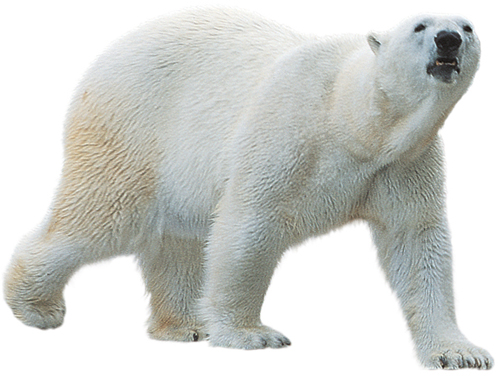
Polar bear, Toronto Zoo
The Beach This
is one area of the city that takes full advantage of its lakeside
setting, with an atmosphere that feels more like a small resort town. In
summer especially, crowds throng to the white sand beaches, stroll the
2.5-mile (4-km) boardwalk, picnic in Kew Gardens, a
turn-of-the-19-century park, and shop along Queen Street (see A Day at the Beach). The area is at its busiest best in late July, during the Beaches international jazz festival.
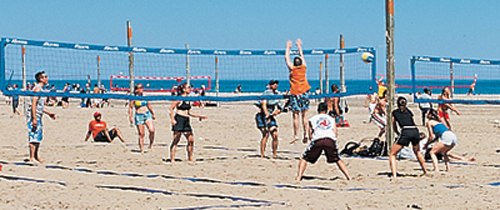
Ashbridges Bay Park, The Beach
Canada’s Wonderland This
theme park north of Toronto draws crowds with its more than 50 rides,
huge water park, and live entertainment. Thrills abound, the biggest
pleasers being the roller coasters.

Canada’s Wonderland
Ontario Science Centre Exhibits
in this museum are interactive and geared toward youngsters, all in the
name of making science education fun. Eleven themed areas cover a
diverse range of topics, including Earth’s ecosystems, space, sport,
communication, energy, and the human body. 770 Don Mills Rd 416 696 1000 Open 10am–5pm daily Adm
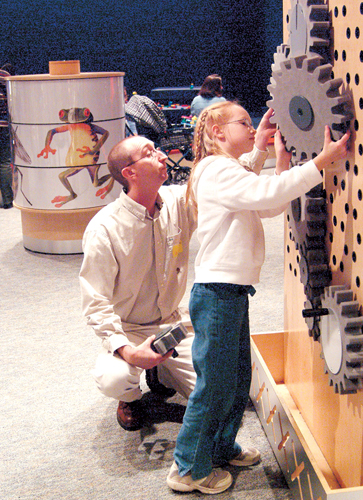
Ontario Science Centre
Black Creek Pioneer Village For
an authentic taste of early settler life, visit this re-creation of a
19th-century rural Ontario community. Among the dozens of buildings – a
handful original to the site, the rest moved here and restored – are a
school, a church, village shops, houses, and barns. The grounds include
an orchard, millpond, restored gardens, and grazing livestock. Costumed
staff demonstrate pioneer crafts and carry out tasks such as tinsmithing
and milling flour (the flour is available for sale). Free wagon rides
are popular with the kids. 1000 Murray Ross Pkwy, Downsview 416 736 1733 Open
May–Jun: 9:30am–4:30pm Mon–Fri, 11am–5pm Sat–Sun; Jul–Labour Day:
10am–5pm Mon–Fri, 11am–5pm Sat–Sun; Labour Day–Dec 31: 9:30am–4pm
Mon–Fri, 11am–4:30pm Sat–Sun Adm
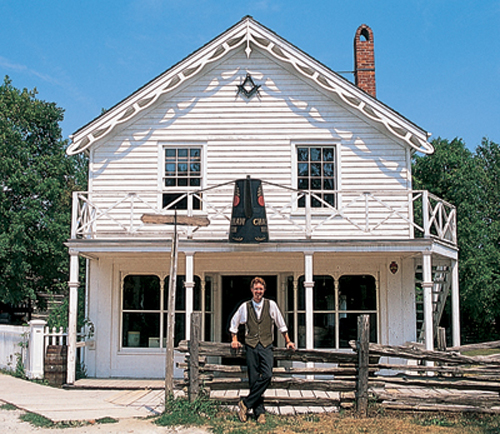
Black Creek Pioneer Village
Gibson House Museum While
North York is a relentlessly modern part of the city, it is also home
to this historic gem – an elegant Georgian farmhouse built in 1851. The
original owner, land surveyor and mapper David Gibson, was a leader of
the Upper Canada Rebellion in 1837 who was forced to flee to the US when
the uprising failed. Following his pardon, Gibson returned and built
this home for his wife and seven children. The museum hosts guided tours
and also holds classes in such forgotten arts as hearth-cooking. Colborne Lodge This
1837 house was the residence of land surveyor John Howard and his wife,
Jemima. Howard deeded the estate to the city, thereby forming the basis
for High Park.
Located at the south end of the park, the Regency-style house, with its
gorgeous circular verandah, has been fully restored and includes many
of the Howards’ original belongings, including John Howard’s original
watercolors of early Toronto scenes. Costumed guides lead tours. Don’t
miss the garden, planted with kitchen herbs and flowers. Seasonal
celebrations, such as the Harvest Festival and the lamplit processions
at Christmastime, are particularly popular. Bradley Museum This
collection of early-19th-century buildings offers a window on the past.
The 1830 farmhouse was built by Lewis and Elizabeth Bradley, United
Empire Loyalists who left the US and settled in Ontario, raising seven
children. The restored house features period artifacts. The Anchorage,
also on the grounds, is a Regency-style cottage originally home to Royal
Navy officer John Skynner. It offers rotating exhibitions and, the last
Sunday of the month, afternoon tea. Toronto Aerospace Museum Housed
in the 1929 de Havilland Aircraft of Canada building on the grounds of
the former Downsview Airport – an air-force base now being converted to a
public park – this museum celebrates Canada’s aviation history. Along
with archival photos, it exhibits artifacts and full-sized aircraft,
such as the 1950s jet trainer and an anti-submarine aircraft built for
the Royal Canadian Navy. Particularly unusual are the exhibits of
flight-training simulators used for pilot instruction in the 1940s and
1950s.
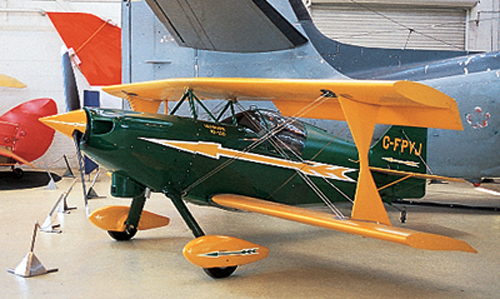
Toronto Aerospace Museum
|